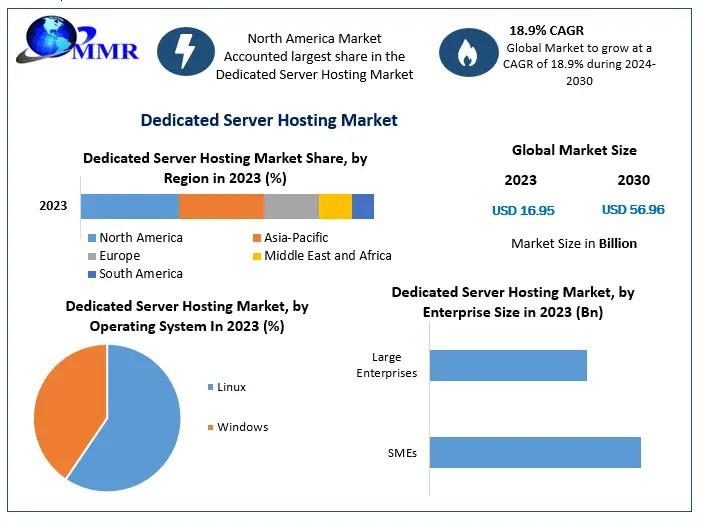NoOps, short for “No Operations,” carries a meaning beyond its literal sense – it’s a goal to aspire to and not an achievable state, explains Hardik Shah of Simform.
NoOps refers to the automation of an IT environment through technologies, including artificial intelligence (AI) and machine learning, to the point where a separate internal department is no longer necessary to manage software. NoOps is similar to serverless computing: servers remain integral but are managed externally.
Treating the NoOps approach as an ideal can help you gain two main benefits. One is active automation and abstraction, which reduces the scope for human error in deployment and configuration tasks. It also improves software quality and security posture, as standardized and automated processes are less prone to vulnerabilities caused by misconfigurations.
The second is that it enhances productivity. In the NoOps model, developers don’t have to continuously work with other teams to complete minor tasks such as infrastructure, operating systems, middleware, or language runtimes. As resources devote more time to development, the software may be completed sooner than expected. Thus, companies have more time to create revenue-generating opportunities.
Understanding Serverless Cloud Architectures
As we already know, serverless computing is a cloud model where developers build and run code without managing servers. The cloud provider handles server allocation on demand and in stateless event-triggered containers. Its key features include server management by the provider, cost efficiency through usage-based billing, and automatic scalability as the user base or usage grows.
| Advantages of serverless cloud architectures | Limitations of serverless cloud architectures |
| Quick time to market with reduced cost | When it comes to long-running workloads, serverless might be more costly than a dedicated server. |
| Developers don’t have to purchase, provision, and manage backend servers. | The initial function request may be delayed if the function is inactive (also known as a “cold start”), although it can be prevented by maintaining its active status. |
Embracing NoOps: Core Concepts
As businesses are moving towards more streamlined and efficient cloud architectures, the integration of NoOps takes a strategic role, and here are some guidelines to build the NoOps culture.
6 Key Principles of NoOps Adoption and Implementation
- Automated deployment pipelines: NoOps is the creation of automated deployment pipelines. These pipelines automate testing, staging, and release processes to ensure a seamless code transition from development to production. This way, developers can deploy changes consistently, which results in faster and more reliable releases.
- Infrastructure as Code (IaC): Infrastructure as Code (IaC) is a practice where infrastructure components are defined and managed through code. It enables version control, repeatability, and consistency to deploy and scale resources. Infrastructure changes like code changes can be tracked, reviewed, and deployed to improve collaboration and reduce errors.
- Self-healing architectures: NoOps encourages the creation of self-healing architectures that can automatically detect and recover from failures. It can be achieved by implementing mechanisms like auto-scaling, automatic failover, and real-time monitoring. Thus, the system can maintain high availability and performance without human intervention.
- Continuous monitoring and feedback: Real-time monitoring provides insights into application performance, resource utilization, and user experience. With this data-driven approach, companies can identify bottlenecks, optimize resource allocation, and proactively address issues before they impact users.
- Collaborative DevOps culture: NoOps thrives where DevOps culture and its best practices are used to bridge the gap between development and operations teams. Through shared responsibilities and continuous communication, teams can iteratively refine deployment processes, improve automation, and maintain the smooth functioning of the entire system.
- Security by design: Security measures such as safe coding practices, regular vulnerability assessments, and automated security testing are integrated to identify and address potential risks.
Automation in NoOps: Streamlining Efficiency
Dynatrace, for example, heavily invests in automation to deploy, monitor, and improve software. Instead of a dedicated team to address production errors, they have self-diagnostics and self-healing tools to automate the processes.
Leverage CI/CD pipelines for seamless deployments
To optimize CI/CD pipelines in NoOps culture, follow these 8 outlined steps:
- Precise testing: Balance test coverage and speed. Lengthy tests can lead to workarounds.
- Enhance security: Secure pipelines with virtual private networks (VPNs), segmenting sections for better protection during attacks.
- Quick failure response: “Fail fast” on the CI side. Swiftly notify developers of issues for rapid fixes, reducing context-switching and boosting efficiency.
- Frequent commits: Regular code commits benefit DevOps teams by maintaining momentum and progress.
- Rapid issue resolution: Utilize CI/CD to address broken builds and maintain code quality swiftly.
- Clean environments: Regularly reset pre-production environments to effectively track configuration changes and updates.
- Continuous automation: Constantly refine the CI/CD pipeline for sustained “continuous automation.”
- Defined processes: Ensure the entire team understands well-documented release and rollback plans.
See More: CI/CD Definition, Process, Benefits, and Best Practices
Continuous testing and monitoring for efficient NoOps workflows
Effective NoOps workflows rely on continuous testing and monitoring. Continuous testing involves automated tests triggered by code changes and delivers rapid feedback. Here’s how to execute continuous testing and monitoring efficiently:
- Craft a testing strategy: Devise a complete plan for continuous testing that integrates automation tools, defines test cases, and aligns testing with development.
- Select appropriate tools: Opt for tools like Azure Monitor to ensure seamless workflow monitoring. Integrate chosen tools seamlessly.
- Adhere to best practices: Build, Deploy, Integration, End-to-end, and Performance tests are essential in a robust CI/CT process. Follow best practices for testing and monitoring at each phase.
Monitoring and Troubleshooting in NoOps
Monitoring and troubleshooting serverless applications in a NoOps environment can present unique challenges. Let’s look at a few necessities.
1. Tools and practices for monitoring serverless applications
Several tools are available to monitor serverless applications, including Dashbird, SenseDeep, Lumigo. These tools integrate with serverless runtime platforms to collect essential data for better visibility and debugging.
In addition to using specialized tools, several best practices can help monitor serverless applications. For example, AWS CloudWatch is a monitoring and observability service for serverless applications.
AWS X-Ray is another powerful distributed tracing service that can help developers understand the flow of requests across serverless functions and services.
2. Detecting and resolving issues in a NoOps environment
Set up automated alerts and notifications, conduct regular performance testing, and implement robust error handling and recovery mechanisms to reduce cyber risks.
For issue resolution, NoOps relies on rapid iteration and collaboration. Detailed logs and historical data offer valuable context for troubleshooting. Rollbacks and automatic scaling adjustments can mitigate the impact of an incident, and ensure uninterrupted service delivery.
It’s important to note that NoOps is not a solution for all problems during production. Limited monitoring capability may be an issue, and it may cause struggle in hybrid environments. However, organizations can tackle these challenges by following best practices and using specialized tools like AWS CloudWatch, Helios, Datadog, New Relic, and Prometheus.
See More: What’s Next for DevOps Automation? 7 Predictions
Cost Optimization Strategies for NoOps Implementation
Here are some strategies to optimize cost:
- Enable financial transparency: Track spending at the outcome level so you can better understand the value of the expenses and identify areas for cost optimization.
- Set targets and benchmarks: Comparing spending with industry peers through external benchmarking can help to identify areas for cost optimization.
- Establish accountability: Run cost optimization as an ongoing discipline with business unit leaders for its long-term success.
Four Best Practices for NoOps Adoption
- Understand the complexity of automation: One of the main challenges in NoOps adoption is the complexity of automation. Developers may need to spend significant time setting up and testing automation tools to ensure they work correctly.
- Ensure operational expertise: Another challenge in NoOps adoption is developers’ lack of operational expertise. It is important to ensure developers have the necessary knowledge and training to manage infrastructure and troubleshoot issues.
- Address security risks: NoOps can introduce security risks if not implemented correctly. It is important to ensure that systems are secure and that sensitive data is protected.
- Embrace cultural shift: NoOps adoption requires a significant cultural shift within an organization. Developers must take on new responsibilities and work more closely with other teams, such as security and compliance.
Future Trends in NoOps and the Serverless Cloud
One of the key trends in NoOps is the rise of serverless computing. With serverless computing, traditional infrastructure and security management tasks can be fully automated, either by cloud providers or solution development teams.
Another trend is the hyper-automation of cloud computing, which has created a NoOps environment where software and software-defined hardware are provisioned automatically. Cloud providers continue to climb the stack, taking on many core systems administration tasks such as patching, backup, and database management.
Transitioning to NoOps
The shift to the NoOps model can be challenging, but it helps to understand why moving is necessary and its advantages for your company. For instance, a few benefits include successfully eliminating obstacles, accelerated growth, and enhanced customer service by adopting NoOps.
A NoOps approach is ideal for companies who want to optimize their development processes with hyper-automation. In the future, NoOps is likely to evolve into intelligent Ops, where artificial intelligence will manage software with greater precision.
How close do you think we are to AI-managed software systems? Share with us on Facebook, X, and LinkedIn. We’d love to hear from you!
Image Source: Shutterstock
MORE ON CLOUD ARCHITECTURE
https://www.spiceworks.com/tech/devops/guest-article/exploring-noops-the-future-of-devops-in-the-serverless-cloud/






